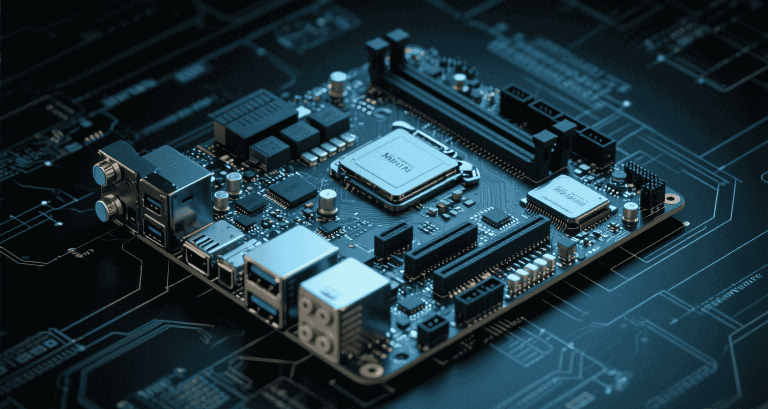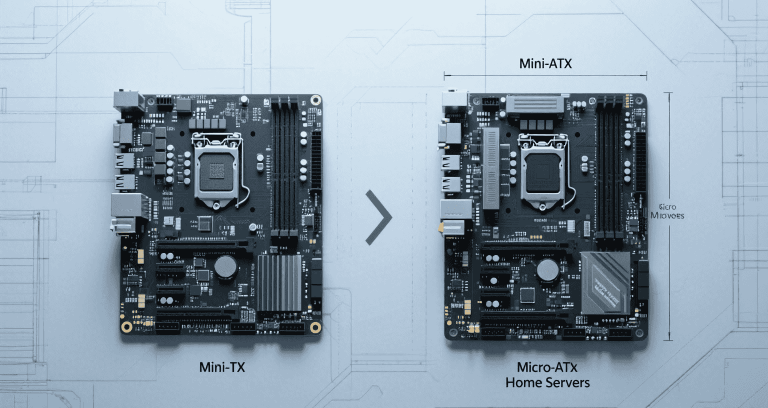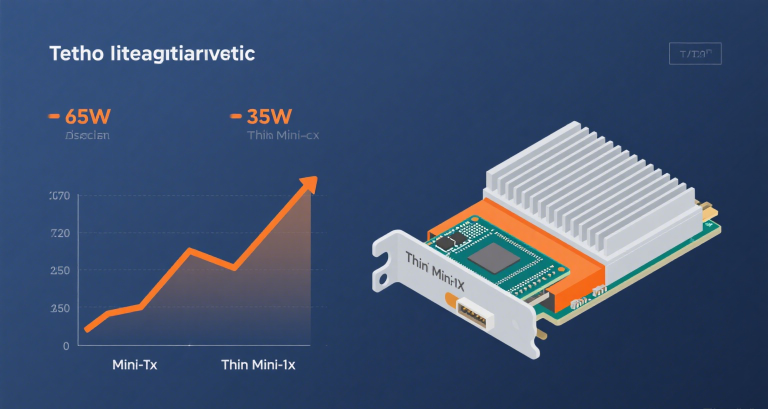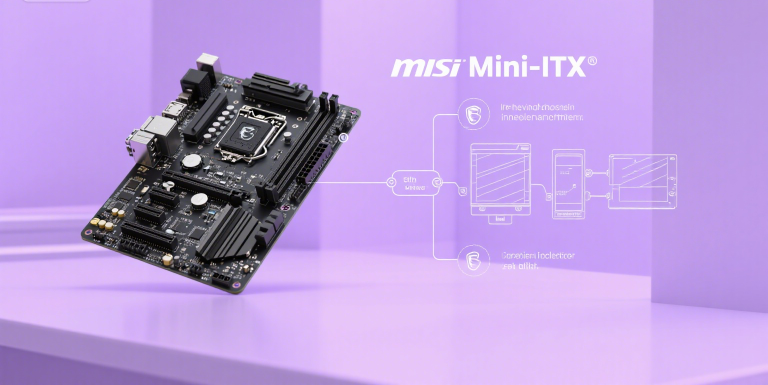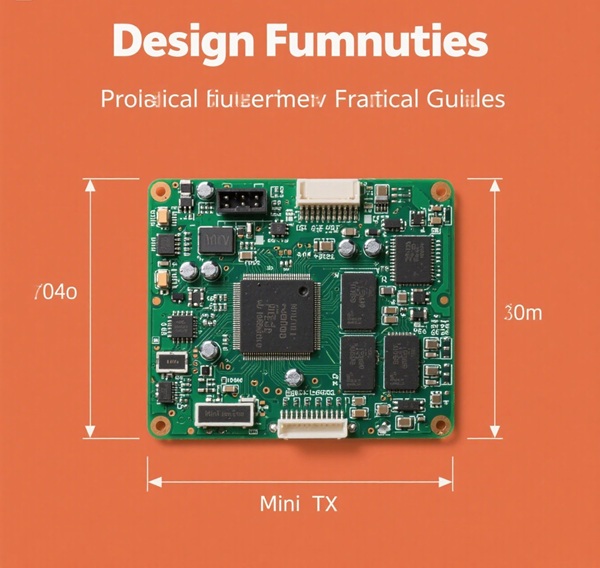10 Types of MINI Motherboards: Compact, Powerful, and Versatile
Discover the different types of MINI motherboards including Mini-ITX, Micro-ATX, and Nano-ITX for compact and powerful computing solutions.
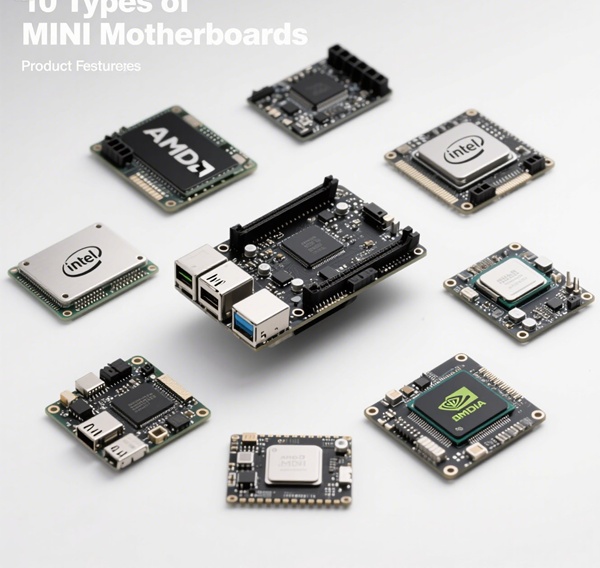
Table of Contents
- Introduction
- Form Factor Comparison Table
- Mini-ITX Embedded Motherboards
- Mini-ITX Gaming Motherboards
- Nano-ITX Overview
- Pico-ITX Overview
- Micro-ATX Motherboards
- Mini-STX Motherboards
- Thin Mini-ITX Motherboards
- Flex-ATX Motherboards
- Choosing the Right Mini Motherboard
- Q&A
- Conclusion
Introduction
At miniitxboard, I’ve spent years advising clients on compact computing. Mini motherboards—often called “small form factor” or SFF boards—enable you to build systems that deliver serious performance in tight spaces. But with so many options—Mini-ITX, Nano-ITX, Pico-ITX, Micro-ATX—it’s easy to get overwhelmed. In this guide, I’ll walk you through each type, explain their benefits and limitations, and show you real-world examples so you can confidently choose what fits your project.
Whether you’re designing an industrial controller, a digital signage system, a high-end gaming PC, or a media server, the right mini motherboard can make or break your build. Let’s explore why form factor matters and how to select wisely.
Form Factor Comparison Table
The table below compares the most common mini motherboard sizes and their key characteristics. Keep this chart handy—it will help you quickly narrow down your options when designing a system.
| Form Factor | Dimensions (mm) | Typical Use Case | Expansion Slots |
|---|---|---|---|
| Mini-ITX | 170 x 170 | Gaming, Embedded, Home PCs | 1 PCIe x16 |
| Nano-ITX | 120 x 120 | Industrial control, IoT | Limited |
| Pico-ITX | 100 x 72 | Robotics, Portable devices | Minimal |
| Micro-ATX | 244 x 244 | Desktops, Workstations | Up to 4 PCIe |
| Mini-STX | 140 x 147 | Compact desktops | None |
| Flex-ATX | 229 x 191 | Media centers, Small servers | 3 PCIe |
| Thin Mini-ITX | 170 x 170 (low) | All-in-One PCs | 1 PCIe |
Mini-ITX Embedded Motherboards
Mini-ITX motherboards measure just 170 x 170mm, making them the gold standard for compact, high-performance systems. I often recommend them to clients who need the power of a desktop CPU in a much smaller footprint. You can install a full-size processor (Intel or AMD), up to 64GB of RAM, and even a dedicated GPU in a Mini-ITX system. This flexibility makes it perfect for embedded applications like digital signage players, edge computing devices, and industrial controllers.
One important advantage is the widespread ecosystem: because Mini-ITX is a popular standard, you’ll find compatible cases, power supplies, and cooling solutions easily. However, you should plan carefully—space constraints mean airflow is limited, so selecting efficient cooling is critical to avoid thermal throttling.
If you’re building an industrial system, look for rugged Mini-ITX variants with extended temperature ranges and conformal coatings. At miniitxboard, we supply models designed for 24/7 operation in harsh conditions, and many clients use them in manufacturing environments or transportation systems.
Mini-ITX Gaming Motherboards
Mini-ITX isn’t just for industrial applications—it’s also hugely popular in gaming. If you want to build a compact, high-performance gaming PC, this form factor is your friend. You can run powerful CPUs like the Intel i9 or AMD Ryzen 9 and pair them with a full-size graphics card thanks to the single PCIe x16 slot.
Many gaming-oriented Mini-ITX boards offer premium features: reinforced PCIe slots to handle heavy GPUs, robust VRMs for stable overclocking, and built-in Wi-Fi 6. However, you should be aware of power and thermal constraints. A compact build requires a carefully planned airflow path, and you may need an SFX power supply to fit in smaller enclosures.
At miniitxboard, we often help clients select cases designed for high TDP components. If you pick the right combination of parts, a Mini-ITX gaming rig can rival the performance of much larger desktops—and look great on your desk.
Nano-ITX Overview
Nano-ITX motherboards shrink things further to 120 x 120mm. They’re designed for embedded applications that need a full-featured platform in a very small space. For example, you’ll find Nano-ITX boards in medical devices, vehicle infotainment systems, and compact networking appliances.
Most Nano-ITX motherboards use low-power CPUs like Intel Atom or AMD Embedded processors. They often support passive cooling, which is essential for silent operation. Because expansion options are limited—sometimes just a mini PCIe slot—you’ll typically rely on integrated graphics and onboard storage interfaces.
When I help clients spec Nano-ITX solutions, the conversation often revolves around power consumption and long-term availability. These boards are engineered for embedded lifecycles and tend to remain in production for several years, which is important for industrial deployments.
Pico-ITX Overview
Pico-ITX takes minimalism to the extreme: just 100 x 72mm. This form factor is perfect for ultra-compact systems where every millimeter counts—think drones, tiny robots, and IoT gateways.
Due to the size, you won’t get socketed CPUs—Pico-ITX boards almost always use soldered-on, low-power chips. Memory may also be soldered to the board to save space. While you sacrifice upgradability, you gain unbeatable density and energy efficiency.
Power consumption is often under 10W, so fanless cooling is common. At miniitxboard, we often recommend Pico-ITX for battery-powered devices and remote installations where low heat and low maintenance are critical.
Micro-ATX Motherboards
Micro-ATX measures 244 x 244mm—larger than the other form factors we’ve discussed but still compact compared to standard ATX. The advantage here is flexibility: you get up to four PCIe slots and additional RAM slots, making Micro-ATX a great choice if you need expandability.
Many clients use Micro-ATX for workstations, budget gaming builds, or small office servers. You can fit more storage devices and add dedicated sound cards, capture cards, or RAID controllers.
If your priority is balancing compactness with future upgrades, Micro-ATX is an excellent middle ground.
Mini-STX Motherboards
Mini-STX is even smaller—only 140 x 147mm—and designed for minimal systems that don’t need dedicated graphics. Unlike Mini-ITX, Mini-STX doesn’t have PCIe x16 slots. Instead, it supports socketed processors (like Intel LGA1151) and relies on integrated graphics.
This makes Mini-STX ideal for ultra-small desktops, kiosks, and all-in-one PCs. If you need something between a NUC and a Mini-ITX build, Mini-STX can be a smart choice.
Thin Mini-ITX Motherboards
Thin Mini-ITX keeps the same 170 x 170mm footprint as Mini-ITX but reduces the vertical height dramatically. This allows it to fit in slim enclosures, such as wall-mounted PCs or very flat all-in-one systems.
Key differences include reduced I/O and sometimes laptop-style power delivery. When I help clients build Thin Mini-ITX systems, we always double-check cooling clearance and power supply compatibility, since these can trip up first-time builders.
Flex-ATX Motherboards
Flex-ATX sits between Micro-ATX and Mini-ITX. You get more expansion slots (up to three PCIe) but still a compact footprint. It’s particularly popular in compact servers, media centers, and workstations where you need more connectivity than Mini-ITX can offer but less space than Micro-ATX requires.
Many Flex-ATX boards also include onboard RAID controllers, which is why I often recommend them for NAS and media server projects.
Choosing the Right Mini Motherboard
Here are the questions I recommend you ask yourself:
- What CPU power do you need?
- Do you require dedicated graphics or will integrated graphics suffice?
- What are your storage needs?
- What is your enclosure size and airflow?
- How important is future expandability?
Balancing these priorities helps you pick the best solution—whether it’s a Mini-ITX powerhouse or an ultra-compact Pico-ITX board. If you need help, miniitxboard can advise you step by step.
Q&A
Q: Can Mini-ITX boards handle gaming GPUs?
A: Yes! You can install full-length GPUs if your case supports them.
Q: Is Pico-ITX good for industrial use?
A: Absolutely. Its low power and small footprint are ideal for embedded deployments.
Q: What’s the best option for a NAS?
A: Micro-ATX or Flex-ATX, for multiple storage drives and RAID support.
Conclusion
Mini motherboards are the cornerstone of compact computing. By understanding the trade-offs of each form factor, you can build systems that are efficient, reliable, and perfectly suited to your needs. If you’d like help sourcing or configuring your board, visit miniitxboard.

